Guide to Gluten Free Flours: Eating Healthy Is Important
So, you’ve decided to go on a diet and cut down on sugar and carbs for a few months. Many professionals say one of the most important steps toward successful weight loss is consuming fewer carbs and, therefore, less gluten. Another reason for you to be cutting out gluten from your diet could be a celiac condition or intolerance to this ingredient.
What Is Gluten and Why Is It Bad?
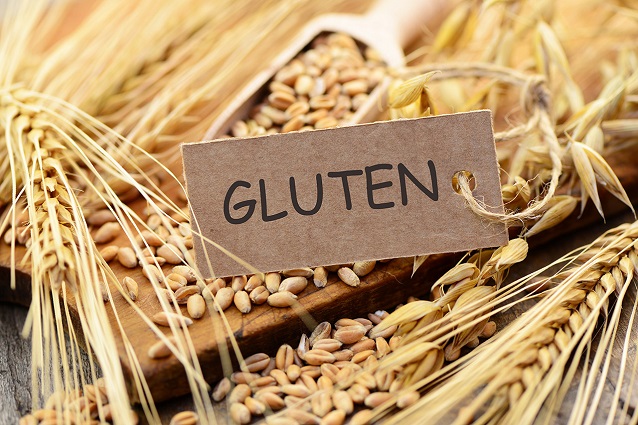
Gluten is a protein that exists in wheat flour, which is found in wheat flour right spelt and barley flour. Gluten helps the dough rise and get that bready and fluffy texture, however, it provides no nutrition. People with an intolerance to this protein or celiac disease have a problem with digesting gluten. It damages their gut system and their body is unable to properly take in nutrients from other foods.
Luckily, with new technologies, there has been a rise in demand for gluten-free flours. These flours are made from different ingredients that contain no gluten and can easily be substituted for traditional wheat flour. While being free of gluten, they’re also full of healthy nutrients that normal flour doesn’t include.
The Most Popular Gluten Free Flours
Nutritious Almond Flour
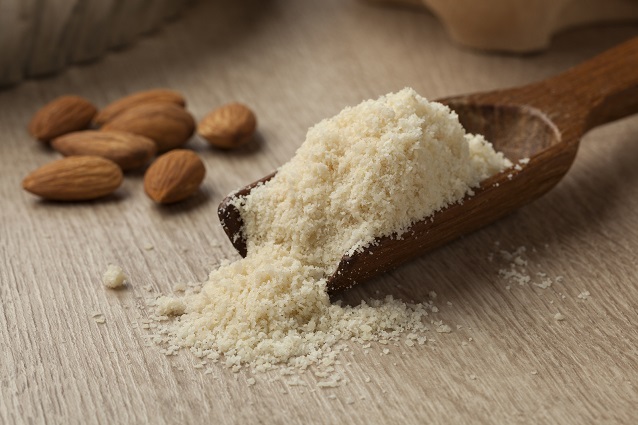
Almond flour has become a popular grain- and gluten-free flour. It’s produced by blanching the almonds in boiling water, removing their skin and grinding them into a fine powder. It has a nutty taste and it’s often used in baking and as a substitute for breadcrumbs. Almond flour can be swapped for wheat flour by using a 1:1 ratio. Because of the lack of gluten, when using a gluten free flour mix, the dough or batter will turn out thicker and denser. To prevent that, you might need to put a bit more of whichever liquid you’re using in the recipe. Almond flour is rich in vitamins and minerals such as magnesium, calcium, iron, copper and vitamin E.
Besides that, it should be noted that because of the naturally higher levels of fat in almonds, the fat content raises the calorie count to 640 per cup, 200 higher than wheat flour. Although almonds as well as all nuts are biologically gluten-free, it’s still a good idea to inspect the label to be sure the flour wasn’t manufactured in a facility that processes other gluten products.
Iron-Rich Coconut Flour
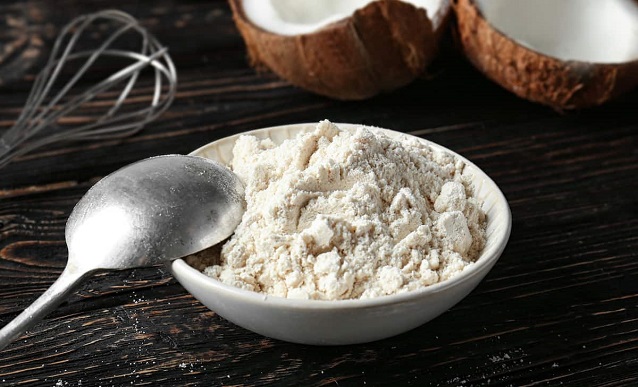
Another great gluten-free substitute is flour made from dried and ground coconut meat, aka gluten-free coconut flour. It has a slight coconut aroma and light texture similar to wheat flour, which makes it great for baked desserts and bread. It’s worth noting that coconut flour absorbs far more water than ordinary or almond flour.
Coconut flour is higher in fat, protein, and fibre than wheat flour. Because of its high iron levels, it is an excellent choice for vegans or vegetarians who are worried about not receiving enough iron in their plant-based diets.
According to research, coconut flour has been shown to possibly help with regulating blood sugars. Because of its low glycemic index levels and high fibre content, it doesn’t cause the blood sugars to spike and crash.
Stay Full Longer with Oat Flour
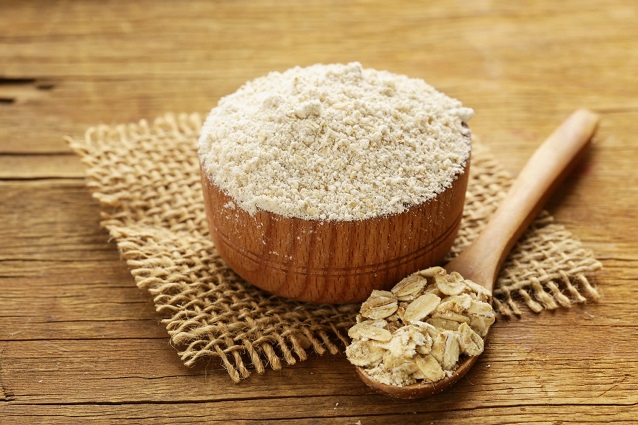
Oat flour is basically ground down oats. It’s easy to make if you have a blender or a food processor at home. Just put some whole grain oats (not steel-cut or instant) and grind them as finely as possible. If you can’t make it yourself, there are a lot of inexpensive oat flours available to purchase.
It’s great at making baked goods more flavorful and really adds that oaty and chewy texture. You should know that using oat flour in baking will make your final result moister than regular flour will. You might need to do some modifications to your ingredients so it turns out the way you want it to be.
Oats contain beta-glucan, a form of dietary fibre with several health advantages. The said fibre keeps you full for longer and may aid in the reduction of high cholesterol, as well as blood sugar and insulin levels. Oat flour is also high in magnesium, various B vitamins, phosphorus, protein and antioxidants.
Depending on how they were cultivated and where they were processed, oats and oat flour are frequently contaminated. If you can’t consume gluten, check for gluten-free goods that have been certified.
High in Fiber Brown Rice Flour
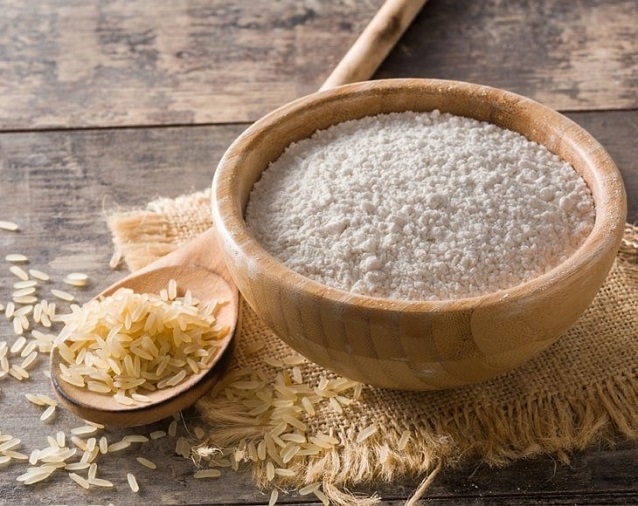
Brown rice flour is perhaps the most multipurpose type of gluten-free flour and is a fantastic alternative to keep in stock. Brown rice flour may make items sticky, thick, and tasteless when used by itself in a recipe. But when used as a gluten free flour mix with other types, it gives flexibility and shape while allowing the taste aspects of the other flours to show. It has a nutty flavour and may be used to make sauces, thicken soups, or yeast bread and is widely used to make noodles or pasta.
This type of gluten-free flour also has a lot of protein and fibre, both of which are useful if you’re trying to lose some weight and decrease your blood sugar levels. Avoid possible gluten contamination by purchasing brown rice flours that were not manufactured in a facility that also processes wheat.
Ancient Crop Sorghum
Deprived of a crop that has been cultivated for over 5000 years, sorghum is one of the most reliable GF flour. Because of its longevity, it’s been ranked as the world’s fifth most valuable cereal grain. It has a subtly sweet flavour and is light in colour and texture. Alike brown rice flour, it’s often mixed with other types because of its heavy nature. The high fibre and protein contents of the sorghum cereal can aid to reduce sugar absorption and it also has a high concentration of iron, as well as antioxidants that directly help in the treatment against inflammation.
Allergy-Friendly Tapioca Flour
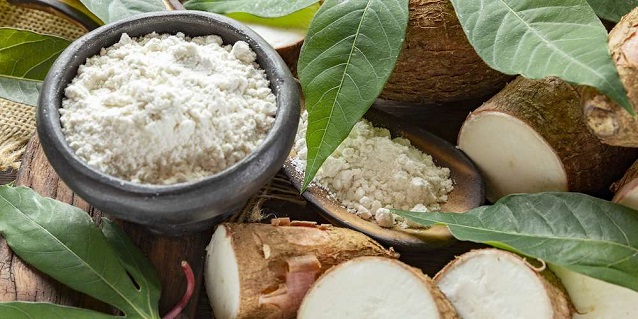
Tapioca flour, often known as tapioca starch, is a popular gluten-free flour manufactured from cassava root starch. It’s widely recognized for the thick, chewy texture it gives to gluten-free foods, but it also functions as an allergy-friendly binder for stews, sauces, custards, and gravies. A significant benefit that makes tapioca flour great is that it’s a resistant starch that behaves similarly to fibre. By being resistant to digestion, tapioca flour has been associated with better insulin levels, lower blood glucose levels, decreased appetite, and other digestive advantages. If you’re gluten-free, be sure tapioca flour isn’t blended with another gluten-containing flour.
To Sum Up
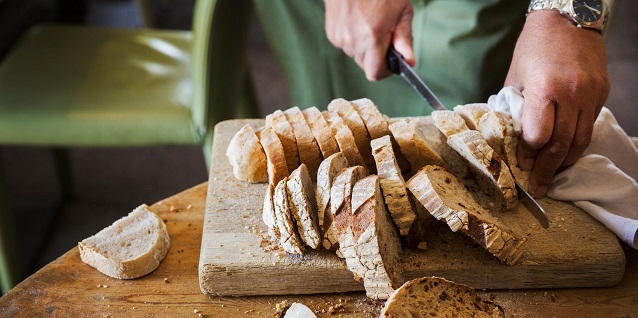
For individuals with celiac disease, non-celiac gluten sensitivity, or those avoiding gluten for other reasons, there are several nutritious, gluten-free alternatives to ordinary or wheat flour to choose from. While some gluten-free flours contain more nutrients than others, they’re still better than regular wheat flour. To make a good final product, most gluten-free flours require recipe tweaks or mixes of several types of gluten-free flours. Some experimenting might be needed to get the perfect end product. Be sure to do your research, and find which one fits you best.



